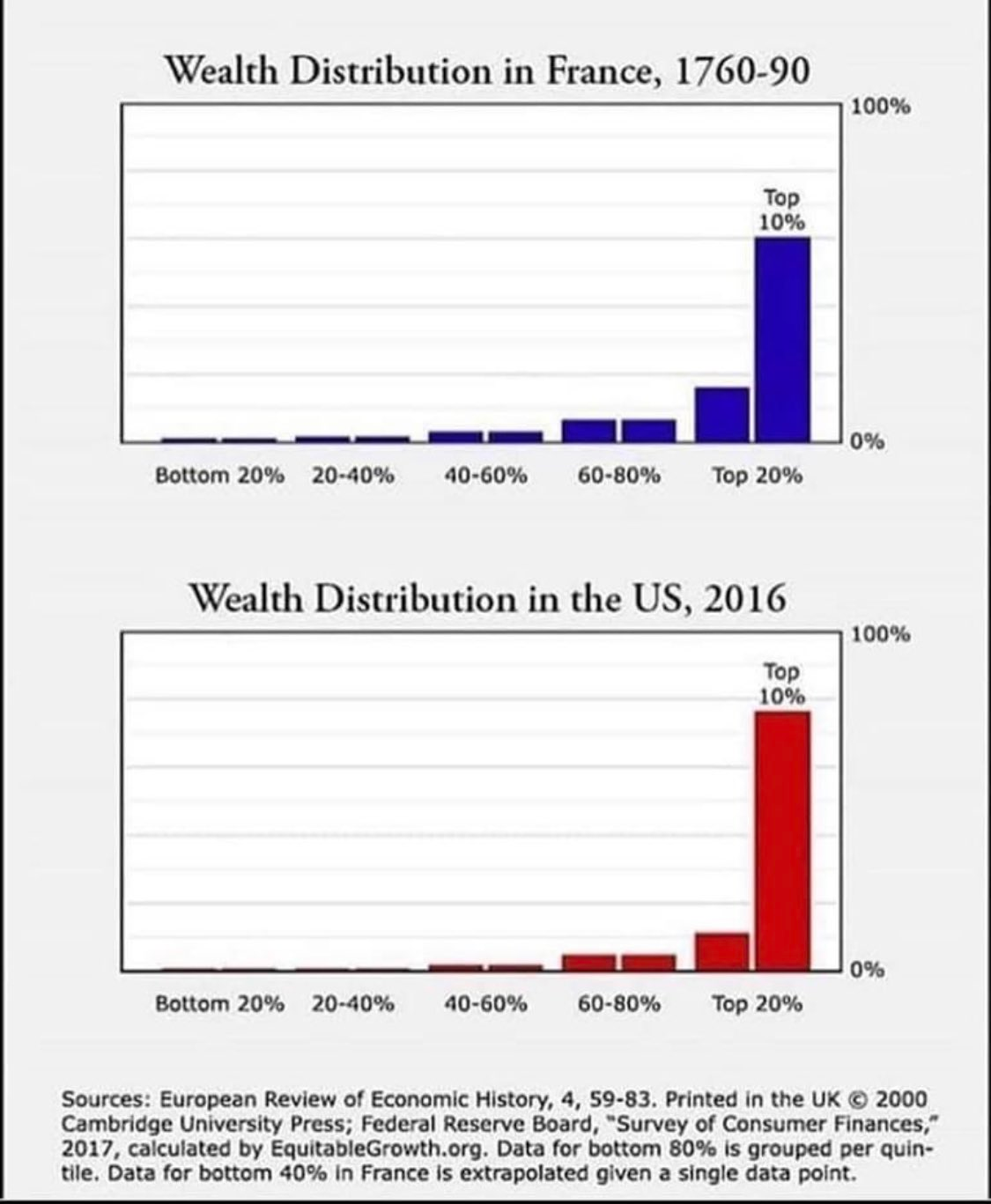Stop calling it that.
- In 1989, the US home ownership rate was 64%. Now, it’s 63%.
- There is an estimated 15 million vacant homes in the US (compared to only 600k unhoused people).
- The number of houses in the US has gone from 78 million in 1975 to 145 million in 2023 (an 85% increase) while the population has gone from 211 million to 340 million (a 61% increase) in the same time.
“But dginovker”, you might say. The median house price in 1980 was 64k, in 2015 it was 275k. How is that not a housing crisis?
Because it’s a wealth inequality crisis.

This data checks out with statistica and cadtm
If we had an actual housing crisis, the issue could be resolved in 5 years by building a couple apartments (and yes, that is good even if you don’t want to live in apartments, since other people moving into apartments makes detached homes cheaper). But we don’t have a housing crisis. We have a crisis where inflation made your job pay 50% less. We have a crisis where the government is going broke to the billionaires. The housing crisis is a symptom of this issue.
We don’t have a housing crisis. Stop calling it that.
Anyways, time for dinner 🎩🍴
We have a crisis where the government is going broke to the billionaires.
The government isn’t going broke (in fact it can’t go broke). This is a housing asset price inflation crisis and a rental housing monopoly crisis.
ProPublica: When Private Equity Becomes Your Landlord
ProPublica: DOJ Backs Tenants in Case Alleging Price-Fixing by Big Landlords and a Real Estate Tech Company
Jacobin: Wall Street Is Buying Up Entire Neighborhoods
Michael Hudson: Asset-Price Inflation and Rent Seeking
The key to understanding the U.S. economy is not so much GDP as capital (asset-price) gains and the offsetting debt burden financing these gains. This financialized overhead is not real growth. It does not make the economy richer. This paper explains why, and provides a statistical format to measure the magnitude of rent extraction or the FIRE [Financial, Insurance and Real Estate] sector on the “product” side of the economy, deflating disposable personal income available to spend on goods and services, and capital gains on the “total returns” side, so as to show how most wealth is achieved not by actual production but by increasingly debt-financed asset-price inflation.


